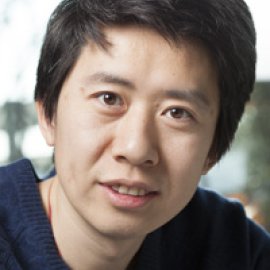Modern Chinese literature and intellectual history, Indiana University, Bloomington, USA

de janvier à juin 2015
Born in Beijing, China, in 1979, Tie Xiao took his BA at Peking University before going to the United States for doctoral studies. He received his PhD in Chinese Studies from the University of Chicago in 2011 and held a post-doctoral fellowship at the Center for Chinese Studies at the University of California, Berkeley in 2011-2012.
His research explores the nexus of psycho-scientific, literary, and popular imaginations about the configuration of the mind, channels of communication, and fantasies of intimate bonding in modern China. Tie is also a writer and translator. He published his first novel in 1997, which won the Bing Xin Literature Prize, and his most recent short story has been nominated for the prestigious Lu Xun Literary Prize (2010). He has made Chinese translations of Raymond Carver’s Cathedral and Alice Munro’s fiction as well as a variety of studies on Chinese art history by Wu Hung.
He is currently an assistant professor of modern Chinese literature and visual culture at Indiana University in Bloomington, United States.
"In the Name of the Masses: Imagining Crowds in Modern China, 1900-1950"
The research of Tie XIAO study the emergence of the crowd (‘qunzhong’) in modern Chinese literature, social psychology, and political thought as a generative trope through which modern Chinese intellectuals and writers negotiated with competing models of revolution and enlightenment, explored the meaning of the vital, the instinctual, and the affective, and defined the very boundaries of subjectivity.
Instead of treating the crowd as a socio-political given, this research examines the historical and epistemological conditions through which the crowd became an urgent object of psychological investigation, political investment, aesthetical representation, and a technology of power for anxious commentators from both the Left and the Right who evoked it as their own source of legitimation.
The project traces the ways in which the formation, dissemination, and transformation of the psychological knowledge of the crowd were mediated by different agents and, across divergent disciplines and forms of cultural production, animated competing imaginations of collective emergence, and determined normative programs of political mobilization and manipulation.